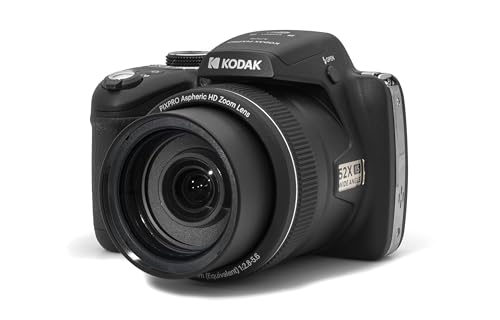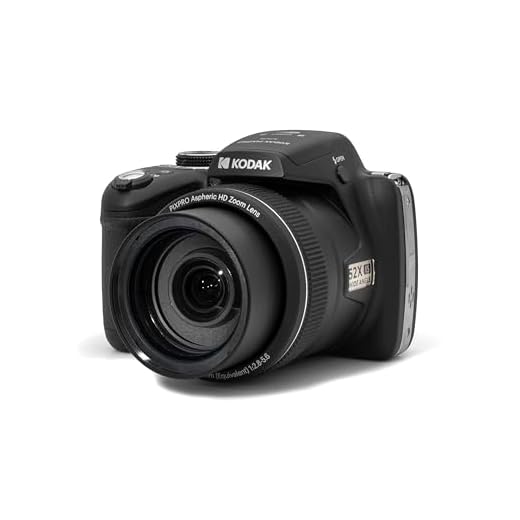




Optical zoom is a term that is often thrown around when discussing digital cameras, but what does it really mean? In the world of photography, optical zoom refers to the camera’s ability to magnify an image without losing quality. Unlike digital zoom, which simply enlarges the pixels in an image, optical zoom uses the camera’s lens to physically zoom in on the subject, resulting in a clearer and more detailed picture.
When you’re shopping for a digital camera, you’ll often see two numbers associated with the zoom capabilities: the optical zoom and the digital zoom. The optical zoom number represents how much the lens can magnify the image, while the digital zoom number indicates how much the camera can enlarge the image using software. It’s important to pay attention to the optical zoom number, as this is the true measure of the camera’s zooming capabilities.
Optical zoom is particularly important when it comes to capturing high-quality images from a distance. Whether you’re photographing wildlife, sporting events, or landscapes, having a camera with a powerful optical zoom can make a world of difference in the clarity and detail of your photos. So next time you’re in the market for a digital camera, make sure to prioritize optical zoom to ensure you’re getting the best possible images.
Understanding Optical Zoom
Optical zoom is a feature found in digital cameras that allows you to physically adjust the lens to bring the subject closer without losing image quality. Unlike digital zoom, which simply enlarges the pixels in an image, optical zoom uses the camera’s lens to magnify the subject optically.
When you zoom in with optical zoom, the lens moves to adjust the focal length, allowing you to capture distant objects with clarity and detail. This is especially useful when shooting wildlife, sports events, or any situation where you need to get closer to the action without compromising image quality.
Optical zoom is typically expressed as a ratio, such as 3x, 5x, or 10x, indicating how much the lens can magnify the image. The higher the optical zoom ratio, the greater the magnification power of the lens.
Overall, optical zoom is a valuable feature that gives you more flexibility and control over your photography, allowing you to capture distant subjects with precision and clarity.
Definition of Optical Zoom
Optical zoom refers to a camera’s ability to zoom in on a subject using the camera’s lens. Unlike digital zoom, which simply enlarges the image digitally, optical zoom physically adjusts the lens to magnify the subject without sacrificing image quality. This means that optical zoom provides a true close-up of the subject by adjusting the focal length of the lens.
Optical zoom is measured as a ratio, such as 3x, 5x, or 10x, indicating how much the lens can magnify the image compared to its widest angle. The higher the optical zoom ratio, the closer you can get to the subject without losing image quality or resolution.
How Optical Zoom Works
Optical zoom on a digital camera works by physically adjusting the lens to change the focal length and magnification of the image. When you zoom in with optical zoom, the lens elements move closer together to bring the subject closer without sacrificing image quality. This is because the lens is actually magnifying the image before it reaches the camera’s sensor, resulting in a clear and detailed picture.
Unlike digital zoom, which simply crops and enlarges the image, optical zoom provides a true zoom effect by adjusting the lens. This allows you to capture distant subjects with clarity and detail, making optical zoom a preferred choice for photographers who value image quality.
Benefits of Optical Zoom
Optical zoom offers several advantages over digital zoom on a digital camera. Here are some key benefits:
1. Improved Image Quality
Optical zoom allows you to physically zoom in on a subject without sacrificing image quality. This is because optical zoom uses the camera’s lens to magnify the image, resulting in sharper and more detailed photos.
2. Versatility
With optical zoom, you have the flexibility to capture distant subjects without compromising image quality. This makes optical zoom ideal for shooting wildlife, sports events, and other scenes where you need to zoom in on a subject.
Overall, optical zoom provides better image quality and more versatility compared to digital zoom, making it a valuable feature for photographers looking to capture high-quality images.
Factors to Consider for Optical Zoom
When choosing a digital camera, it’s important to consider several factors related to optical zoom to ensure you get the best possible results. Here are some key factors to keep in mind:
1. Zoom Range
The zoom range of a camera determines how close you can get to your subject without losing image quality. A larger optical zoom range allows you to capture distant subjects with clarity and detail, while a smaller zoom range may limit your ability to zoom in on faraway objects.
2. Image Quality
Optical zoom maintains image quality by physically adjusting the lens to magnify the subject. This results in sharper and more detailed images compared to digital zoom, which simply enlarges the existing image and can lead to a loss of quality. Consider the optical zoom capabilities of a camera to ensure you achieve high-quality photos.
Optical Zoom vs. Digital Zoom
When it comes to zoom capabilities on a digital camera, there are two main types: optical zoom and digital zoom. Optical zoom is the true zoom feature of a camera that allows you to physically zoom in on an object by adjusting the lens. This means that the camera’s lens is actually moving closer to the subject, resulting in a higher quality image without any loss of resolution.
On the other hand, digital zoom is a software-based feature that essentially crops and enlarges a portion of the image to make it appear closer. While digital zoom can make an object appear larger in the frame, it often results in a loss of image quality and resolution, as the camera is essentially stretching the pixels to create the zoom effect.
In summary, optical zoom provides a true zoom capability with no loss of quality, while digital zoom is a software-based feature that can result in a loss of image quality. When choosing a digital camera, it’s important to consider the optical zoom capabilities for capturing high-quality zoomed-in shots.
Choosing the Right Optical Zoom Camera
When selecting a digital camera, one of the key features to consider is the optical zoom capability. Optical zoom refers to the camera’s ability to magnify an image without sacrificing image quality. Here are some factors to consider when choosing the right optical zoom camera:
1. Determine Your Needs
Before making a purchase, assess your photography needs. If you plan to capture distant subjects or shoot wildlife or sports, a camera with a higher optical zoom range would be ideal. On the other hand, if you mainly take close-up shots or portraits, a camera with a lower optical zoom may suffice.
2. Understand Optical Zoom Range
Optical zoom is typically expressed as a ratio (e.g., 3x, 5x, 10x) and represents how much the lens can magnify an image. A higher optical zoom allows you to get closer to your subject without compromising image quality. However, keep in mind that a higher zoom range may also result in a larger and heavier camera.
- For casual photography: A camera with 3x to 5x optical zoom is usually sufficient.
- For travel and nature photography: Look for cameras with 10x to 20x optical zoom for capturing distant subjects.
- For professional photographers: Consider cameras with 20x or more optical zoom for versatile shooting options.
By understanding your needs and the optical zoom range, you can choose a camera that best suits your photography style and preferences.
Examples of Optical Zoom in Action
Imagine you are at a football game and want to capture a close-up shot of your favorite player scoring a goal. With optical zoom, you can magnify the image without losing quality, allowing you to focus on the action on the field.
Another example is when you are on a safari adventure and spot a magnificent lion in the distance. By using optical zoom on your camera, you can zoom in on the lion without scaring it away, capturing stunning details of its majestic features.
Optical zoom is also handy during family gatherings or events when you want to take group photos. You can easily zoom in to fit everyone in the frame without compromising image quality, ensuring everyone’s smiling faces are captured clearly.
Tips for Using Optical Zoom Effectively
1. Understand the zoom range: Familiarize yourself with the optical zoom capabilities of your camera. Know the maximum and minimum zoom levels to make informed decisions when capturing your subject.
2. Use a tripod: Optical zoom can magnify camera shake, resulting in blurry photos. To ensure sharp images, use a tripod when using high levels of optical zoom.
3. Experiment with different zoom levels: Don’t limit yourself to using only maximum or minimum zoom levels. Experiment with different zoom settings to find the best composition for your shot.
4. Focus on your subject: Optical zoom allows you to get closer to your subject without physically moving. Make sure to focus on the subject to capture clear and detailed images.
5. Consider lighting conditions: Optical zoom may affect the amount of light entering the lens. Be mindful of lighting conditions and adjust settings accordingly to avoid overexposure or underexposure.
Common Myths About Optical Zoom
Myth 1: More optical zoom is always better. While optical zoom is important, a higher zoom doesn’t necessarily mean better image quality. Factors like lens quality and image stabilization also play a crucial role in capturing clear and sharp images.
Myth 2: Digital zoom is just as good as optical zoom. Digital zoom simply magnifies the image digitally, resulting in a loss of image quality. Optical zoom, on the other hand, uses the lens to zoom in without sacrificing image clarity.
Myth 3: Optical zoom is the only factor that matters in a camera. While optical zoom is important, other factors such as sensor size, aperture, and ISO sensitivity also contribute to the overall image quality. A camera with a good balance of features will produce better results than one with just a high optical zoom.
FAQ
What is optical zoom on a digital camera?
Optical zoom on a digital camera refers to the actual physical movement of the lens to adjust the focal length and magnify the image. It provides a true zoom effect without sacrificing image quality.
How does optical zoom differ from digital zoom on a camera?
Optical zoom uses the lens to magnify the image optically, resulting in higher image quality and clarity. Digital zoom, on the other hand, simply crops and enlarges the existing image, often leading to a loss in quality.
Why is optical zoom important in photography?
Optical zoom is important in photography because it allows you to get closer to your subject without sacrificing image quality. This is especially useful for capturing details from a distance or achieving a desired composition.
What are the advantages of having a digital camera with optical zoom?
Having a digital camera with optical zoom allows you to capture high-quality images from a distance, giving you more versatility in your photography. It also helps you maintain image clarity and sharpness even when zoomed in.
Can optical zoom make a difference in the quality of my photos?
Yes, optical zoom can make a significant difference in the quality of your photos by allowing you to get closer to your subject while maintaining image sharpness and detail. It helps you capture clear, detailed shots even from a distance.






